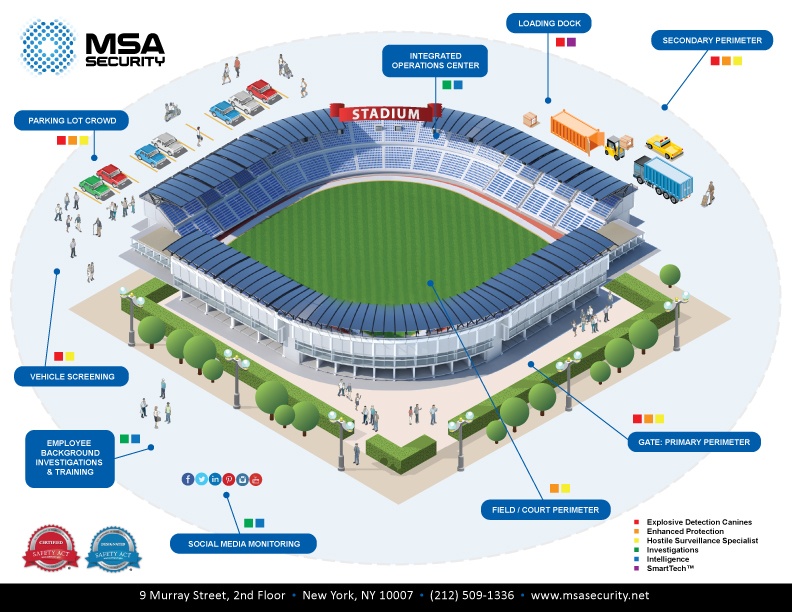The 2018 baseball season is underway, and fans are filling stadiums across the country. Sports stadiums remain a high-profile soft target for terrorists and security must be proactive, comprehensive and vigilant to adequately protect fans, players, staff and venues. Moreover, a robust stadium security posture must be layered to include physical, intelligence and investigative areas from the field perimeter out through an extended radius and including the secondary perimeter.
Today, most sports venues have substantial perimeter security established at all entrances, however within the field perimeter there are often-overlooked security gaps successfully addressed with special operatives. With unique tactical abilities, specialized skills and elite backgrounds, uniformed armed operatives are both a visible deterrent and a valuable force multiplier in providing enhanced protection against acts of terrorism and active shooter events, protecting life and property. Let’s look at just three areas inside the stadium that benefit from this topflight level of protection detail.
Filling the Reactionary Gap
Response time for any act of terror or active shooter event is vital and, in most incidents, a reactionary gap averaging 15 minutes is created between the initial call to 911 and law enforcement response and entry. This critical window of time, if not properly managed by highly-skilled and experienced security personnel, can result in unnecessary loss of life. Trained in active shooter mitigation and counterterrorism awareness, uniformed armed operatives deployed in a stadium environment are uniquely prepared for a rapid response. They will confront and neutralize the threat, assist with civilian evacuation or shelter and liaise with local law enforcement or government agencies arriving on the scene.
Emergency Response Planning
With a growing threat of terrorism and active shooter events nationwide, it is essential that every sports or entertainment venue have in place – and be trained to execute – a comprehensive emergency response plan. Every stadium environment is different and carries unique security vulnerabilities due to factors like venue structure and layout, geographic location and existing security protocol and personnel. To be effective, the response plan must be tailor designed to address the specific venue’s exposure, processes and people.
Because working a stadium every day can make certain vulnerabilities seem invisible, an experienced and trained operative team assigned to a specific stadium detail is well equipped to provide a fresh perspective on the environment to assist with the development, training and implementation of an emergency response plan, while working in conjunction with the proprietary or contract security guard force.
Escorting Cash-in-Transit
At every stadium and at every game, concession stands selling merchandise, food and beverage, receive an extraordinary amount of cash. Rather than allow cash to build at individual and freestanding concession stands, most venues opt to regularly transport the cash to venue vaults or secure offices throughout the course of an event. When these cash-in-transit walks are without an armed and trained operative escort, they pose a considerable security risk for venue staff and patrons.
These examples of enhanced protection security measures within the field perimeter are vital to improving a stadium’s layered security posture. In our next blog, we will look at how the coordinated role of Investigations will allow organizations to stay ahead of emerging security threats.

